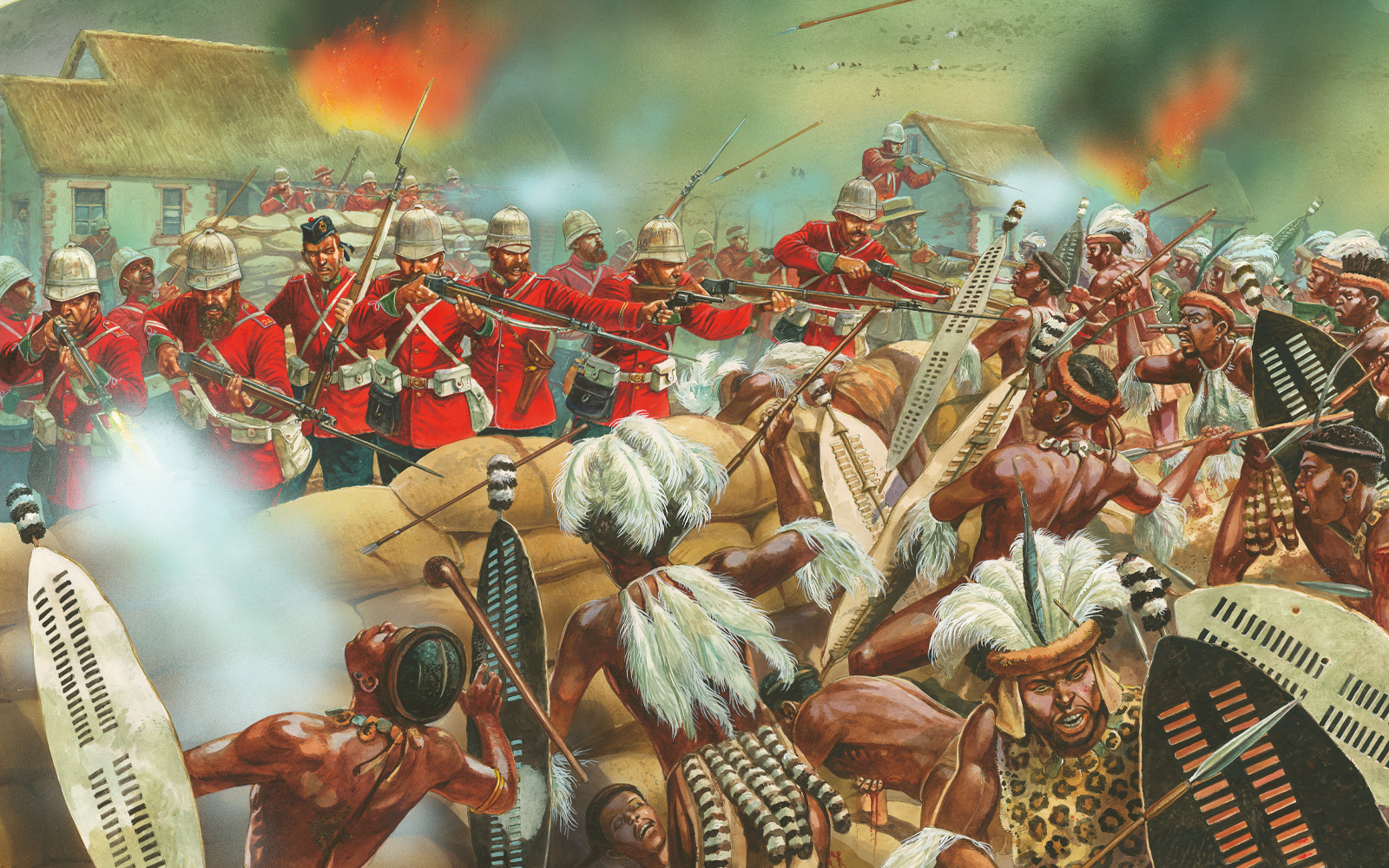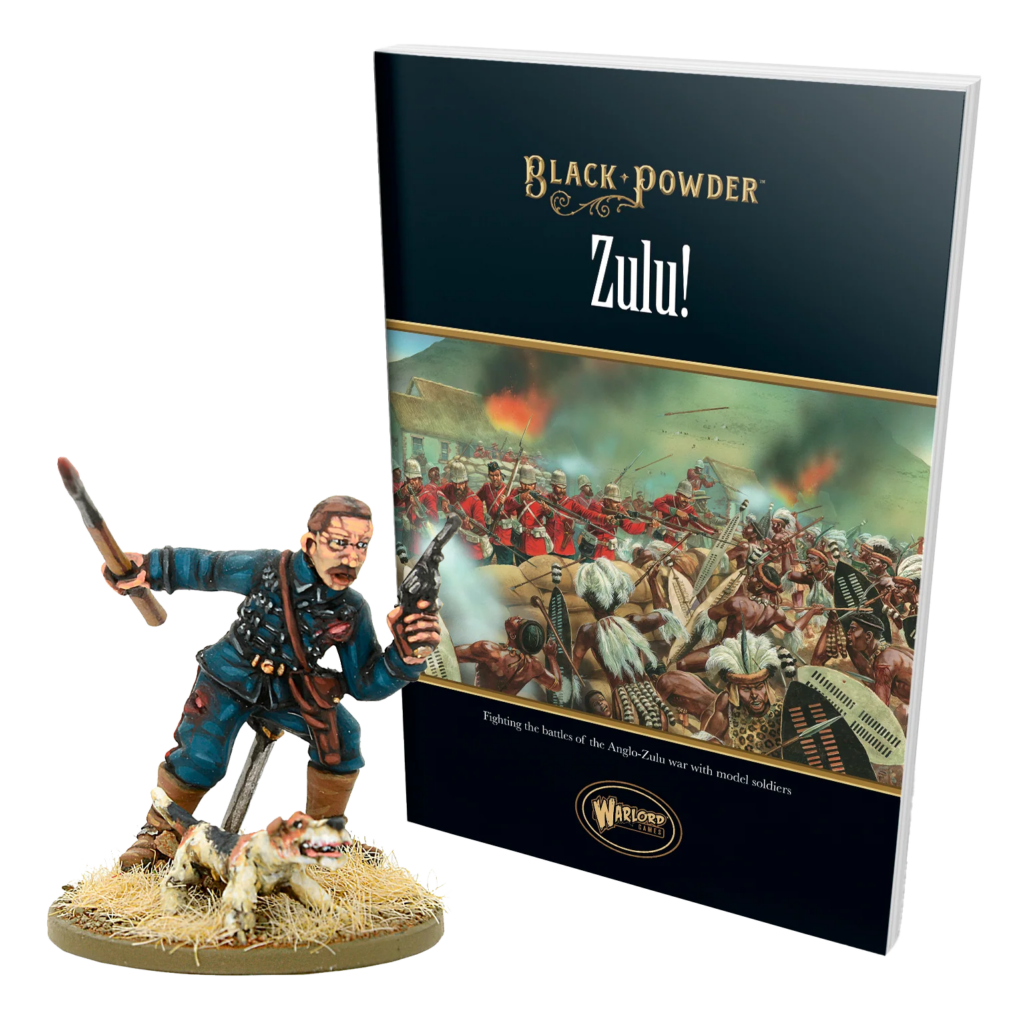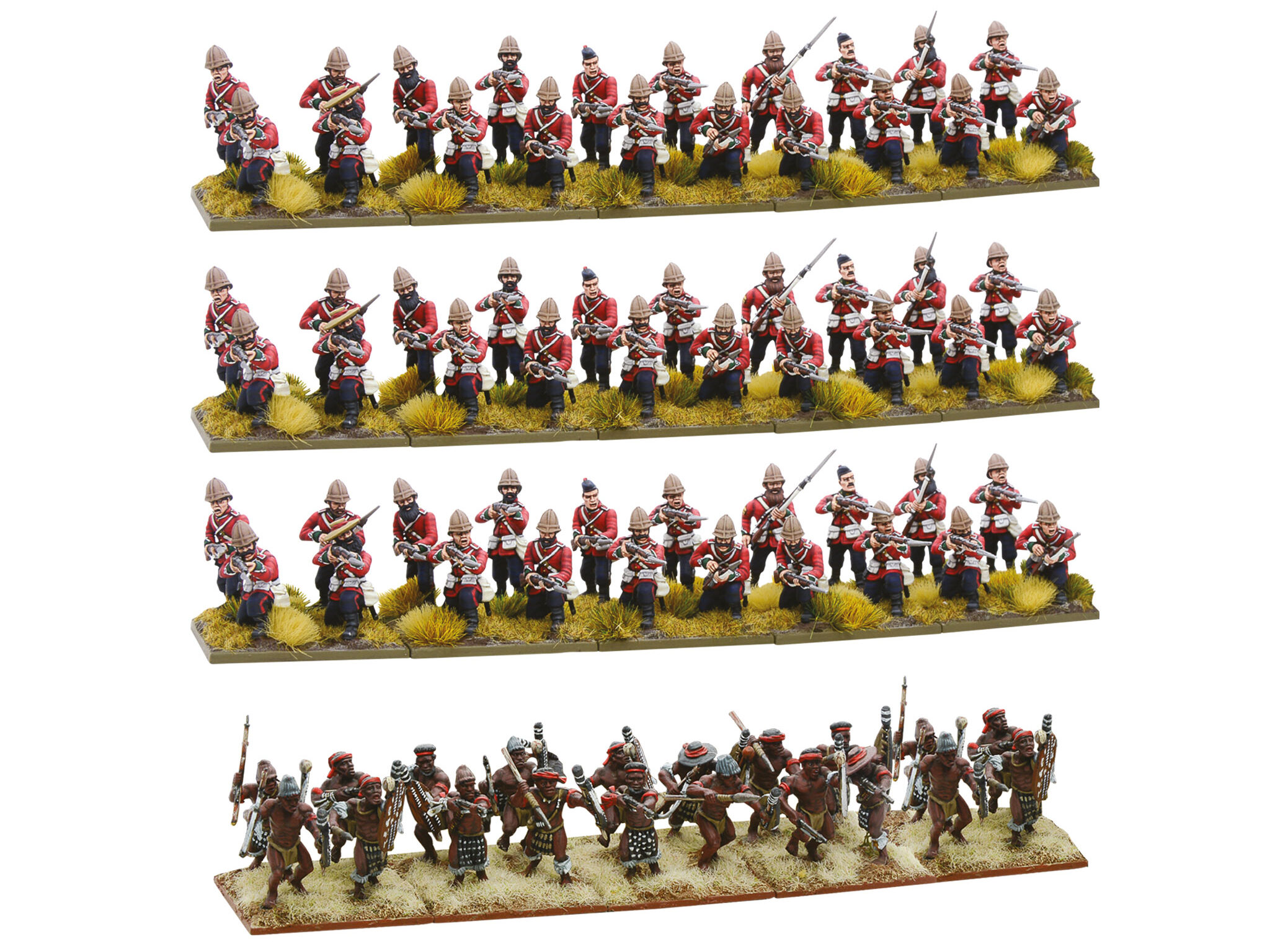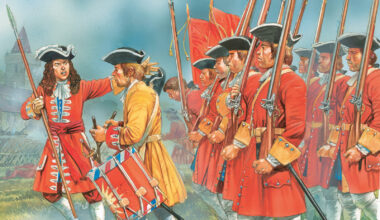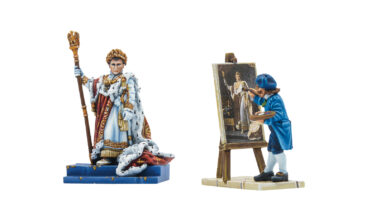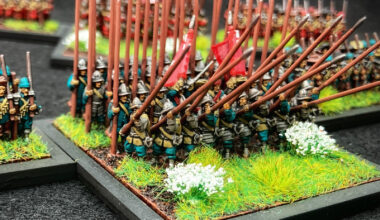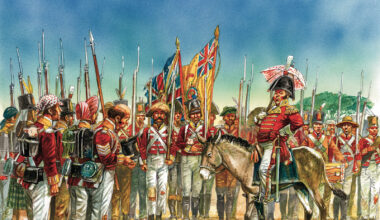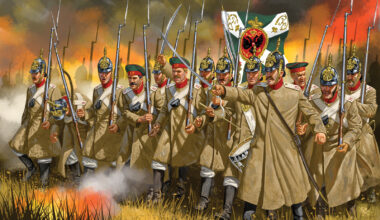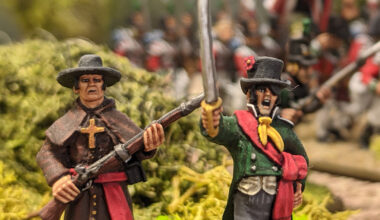The Anglo-Zulu War sits at the very tail end of the periods covered by Black Powder, and the asymmetry of the forces involved make it a particularly fascinating, and challenging, period to wargame. Long have the brave stand of the British Redcoats at Rorke’s Drift sat in the imagination , thanks in no small part to the silver screen, but there is far more to discover from the period, from the disaster of Isandlwana to the capture of the Zulu king Cetshwayo and the end of the months-long conflict.
The Anglo-Zulu War
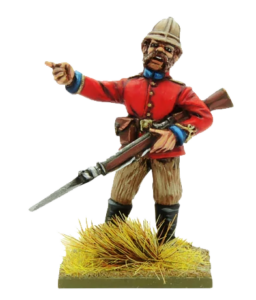
Fought in present-day South Africa, the Anglo-Zulu War (January-July 1879) came about a result of British efforts, politically and militarily, to impose a ruling minority in the South African regions – bringing the African Kingdoms, various tribal areas and Boer republics into South Africa. Amongst many of the obstacles was the armed independent republic of Zululand. On 11 December 1878, Sir Bartle Frere, High Commissioner for the British Empire, issued an ultimatum to Zulu King Cetshwayo, one that he knew would never be agreed to, as a pretext to invade Zululand.
The first major encounter between British and Zulu forces was on 22 January 1879, at Isandlwana. A force of around 20,000 warriors attacked a portion of the British main column numbering just over 2,0000, of a mix of British, colonial, and native troops, as well as civilians. Despite being armed with traditional iron spears and antiquated rifles, against the considerably more modern arms of the British, plus field guns, the Zulus commanded a decisive victory – defeating the first invasion attempt of Zululand. Bloodied and embarrassed, the reputation of the British Army as invincible was shattered. The result was a much more aggressive approach in the follow-up invasion attempt, and all hopes of any negotiated peace ebbed away.
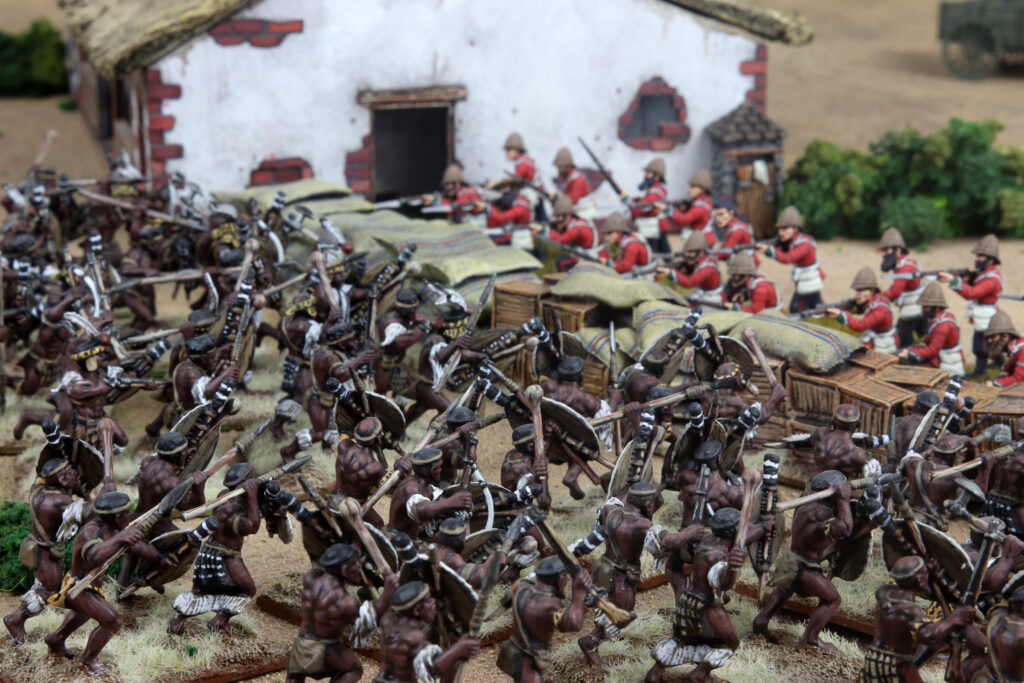
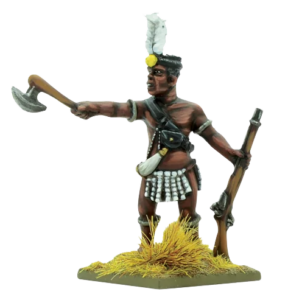
The second invasion began inauspiciously for the British. It was several months later and they were more or less in the same placer they had started in January. However Lord Chelmsford, in command of the British Expeditionary forces, sought to expedite proceedings when he received word that he was to be replaced. With reinforcements arriving, Chelmsford re-organised his force and once again advanced into Zululand in June 1879, this time exercising caution with a series of fortified camps being built in his wake to prevent any repetition of Isandlwana. Not open to any form of peace negotiations from Cetshwayo, Chelmsford marched to the royal kraal of Ulundi, where on 4 July the main Zulu army was decisively defeated.
Zulu! A Black Powder Supplement
Your first port of call for recreating these battles on the tabletop should be the Zulu! supplement for Black Powder. This lavish 92- page tome, penned by Neil Smith, chronicles not only the legendary battles of Isandlwana, Rorke’s Drift and Ulundi, but also background for other, less well known conflicts as well as rules and force listings – all wrapped up with the usual photographs of beautifully painted miniatures and armies!
Order your copy from the Warlord Games webstore and you’ll also receive a free special edition miniature, Prince Louis Napoléon. The only son of Napoleon III, after his father’s deposition the family was exiled to England. Joining the British Army, he was permitted to attend the Anglo-Zulu War. His eagerness to see action would be his downfall, and he was killed on 1st June 1879, leading a scouting party deep into Zululand. An alternative head is included, so you could also use the figure to create a generic British officer.
Rorke’s Drift Battle Set
“Zulus, thousands of ’em!” The Defence of Rorke’s Drift as part of the Anglo-Zulu Wars, occurring between the 22nd and 23rd of January 1879, is the stuff of legend. Just over 150 British and colonial troops defended the mission station against attacks from Zulu warriors numbering between 3,000 and 4,000 in strength, a force that had peeled off from the main force at Isandlwana and travelled 6 miles to attack the mission station. For their efforts, no fewer than eleven Victoria Crosses were awarded to individual defenders. Immortalised on the silver screen in 1964’s Zulu, the battle has long been embedded in the popular consciousness.
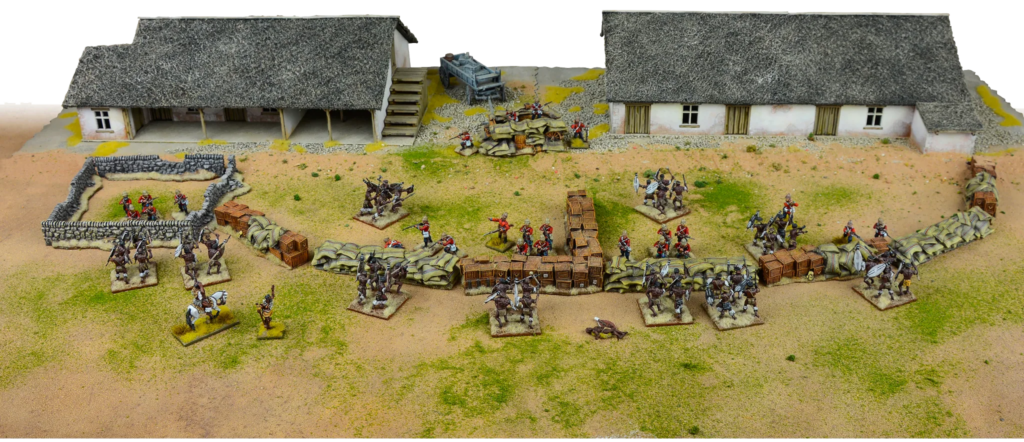
Because of its massively asymmetrical forces, it represents a particularly interesting challenge on the Black Powder tabletop. To get started, look no further than the Rorke’s Drift battle-set, which in addition to 20 plastic British redcoats, 40 plastic Zulus and a host of characterful metal miniatures, is chock full of MDF and resin scenery pieces that will make your tabletop battles come alive. Take the experience even further with the Horns of the Buffalo collector’s edition which doubles down on the scenic elements with extra barricades, walls and animals, and eight extra metal characters!
British Starter Army
A casual look at Tommy Atkins of the Victorian period gave little away about his fighting abilities. Standing 5´5″ on average, and often shorter, he may or may not be able to read or write. This appearance was deceptive, however. The average British redcoat was the most dangerous animal in Africa, equipped as he was with the Martini-Henry breech-loading rifle which he was capable of firing 15 times a minute out to 1200 yards range in volley fire if needs be.
His legendary discipline, his marching ability ´enough to traverse all manner of terrain´ and his determination to fight his enemies, which were legion, all made the British redcoat an implacable foe.
Well led, well-equipped and thoroughly trained in his abilities, he blazed a trail for Empire all over the world. Cheerful and confident the redcoats of the County Regiments served their sovereign well, smashing their enemy with concentrated rifle fire and, if necessary, selling their lives dearly behind the thrust of their wicked long bayonets.
Providing support for the British army were Natal Native Contingents. Largely being used as support for the Main British forces in South Africa they became the main defence force against the Zulu forces. Recruited from the local populace, mainly from the Basuto and Mponso tribes, this force excelled in dealing with Zulu due to an extensive history of fighting them.
Box Contains:
- 60 plastic British Infantry
- 20 plastic Natal Native Contingent
Zulu Starter Army
The Zulu army was a formidable foe. Well-trained, well-led, and well-equipped for campaigns, the Zulu regiments were the terror of Africa. Created by the great Shaka, founder of the nation, each regiment was composed of small companies who trained together, and a regiment could be 1,000 men strong. They were then brigaded together to form divisions that could move at great speed and with drilled precision, forming the classic Zulu attack formation of the Horns of the Buffalo.
The military system formed units into married and unmarried units, so a cadre of young men would be forced to remain unmarried on the King’s orders until they had ‘washed their spears’ in the blood of their enemies. They are armed with throwing spears, smoothbore muskets and the deadly stabbing short spear whilst their patterned ox-hide shields help identify their parent regiment.
Once they were blooded, and only then, would they sew in the characteristic head ring which is the symbol of a mature and married warrior, showing his much-enhanced status in society.
These then are the finest warriors of a fierce and proud army of 40,000 men, eager to preserve Zululand from all invaders, Swazi, Boer or British!
Box Contains:
- 40 plastic Married Zulus
- 40 plastic Unmarried Zulus
